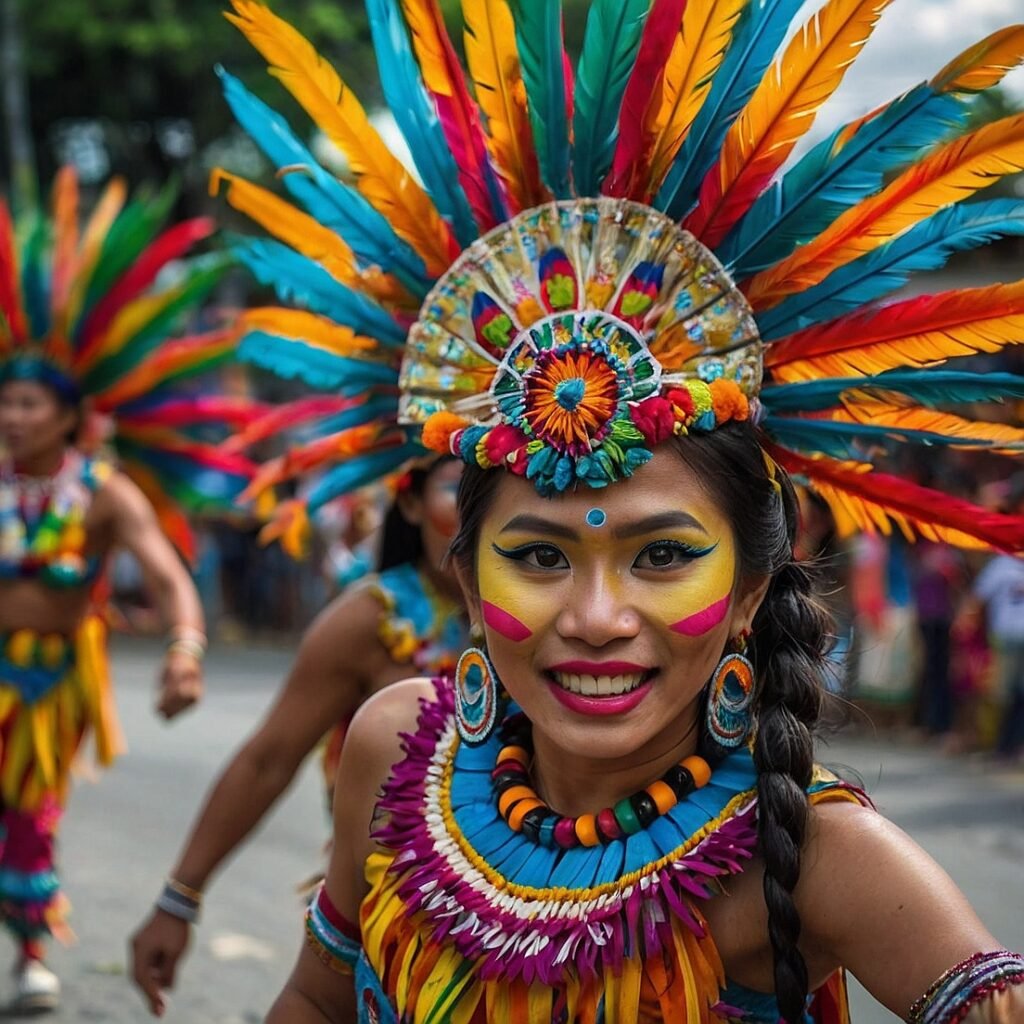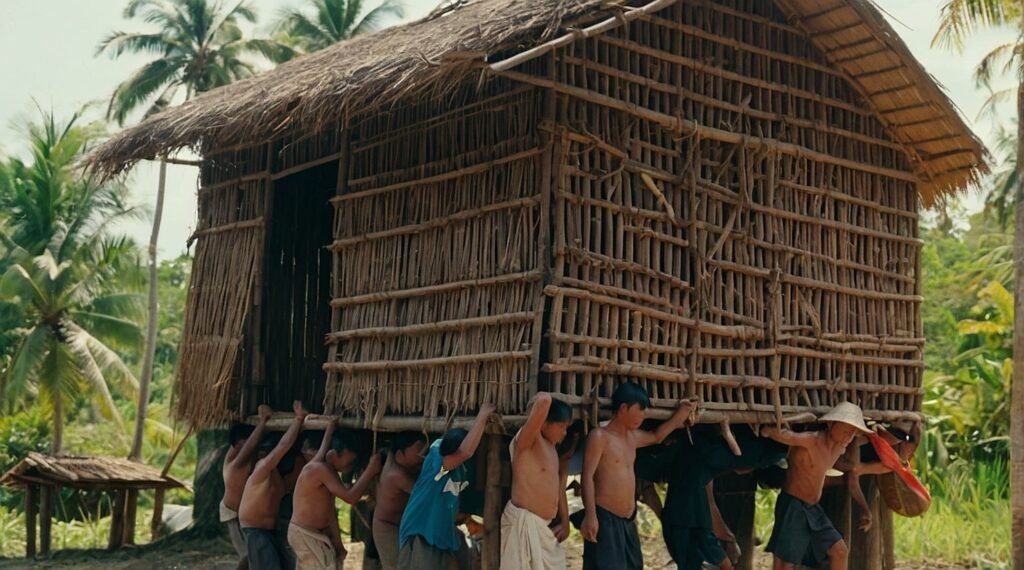Hey there, fellow culture enthusiasts and adventure seekers! Are you ready to dive into the vibrant world of Philippine festivals? Buckle up, because we’re about to embark on a whirlwind tour of some of the most colorful, exciting, and downright unforgettable celebrations this archipelago has to offer. From north to south, east to west, the Philippines is a country that knows how to party – and boy, do they do it in style! So, grab your calendars and let’s start planning your next festive getaway. Trust me, you won’t want to miss out on these incredible experiences that showcase the heart and soul of Filipino culture.
The Filipino Fiesta Spirit: More Than Just a Party
Before we jump into the specific festivals, let’s talk about what makes Philippine fiestas so special. You see, in the Philippines, a fiesta isn’t just a party – it’s a way of life. These celebrations are deeply rooted in the country’s history, culture, and religious traditions. They’re a time when entire communities come together, setting aside their differences and daily worries to honor their patron saints, give thanks for bountiful harvests, or simply celebrate the joy of life itself.
Picture this: streets adorned with colorful banners, the air filled with the tantalizing aroma of traditional dishes, and the infectious rhythm of local music. Everywhere you look, you’ll see smiling faces, elaborate costumes, and a sense of unity that’s truly awe-inspiring. It’s this unique blend of spiritual devotion, cultural pride, and pure, unbridled fun that sets Philippine festivals apart from any other celebrations you might have experienced.
But here’s the kicker – each region, each city, even each small town in the Philippines has its own unique twist on the fiesta tradition. That means no two festivals are exactly alike, and there’s always something new to discover. Whether you’re a first-time visitor or a seasoned traveler, the world of Philippine festivals offers an endless array of experiences that will leave you breathless, amazed, and hungry for more.
Sinulog Festival: Cebu’s Grandest Celebration
Let’s kick things off with a bang, shall we? The Sinulog Festival in Cebu City is often hailed as the “Mother of All Philippine Festivals,” and for good reason. Held every third Sunday of January, this massive celebration honors the Santo Niño (Holy Child Jesus) and draws millions of visitors from all over the world.
The Grand Parade: A Spectacle Like No Other
The highlight of Sinulog is undoubtedly the Grand Parade, a dazzling display of color, music, and dance that winds through the streets of Cebu City. Picture this: hundreds of dancers moving in a hypnotic, two-steps-forward, one-step-back rhythm that mimics the movement of the Cebu River. Their elaborate costumes, a riot of feathers, sequins, and vibrant hues, shimmer under the tropical sun as they perform to the beat of drums and the chants of “Pit Señor!” (Hail, Lord!).
But Sinulog isn’t just about the parade. For an entire week leading up to the main event, Cebu comes alive with a whirlwind of activities. From street parties and food festivals to cultural shows and religious processions, there’s never a dull moment. It’s a perfect blend of sacred and secular celebrations that truly captures the essence of Filipino spirituality and joie de vivre.
Tips for Sinulog First-Timers
If you’re planning to experience Sinulog for the first time, here are a few insider tips to help you make the most of it:
- Book your accommodations well in advance – Cebu gets packed during Sinulog, and hotels fill up fast.
- Wear comfortable shoes and light, breathable clothing – you’ll be doing a lot of walking and dancing in the tropical heat.
- Stay hydrated and don’t forget the sunscreen!
- Join in the street parties, but be mindful of your belongings in the crowds.
- Try to catch the early morning “Mañanita” Mass at the Basilica del Santo Niño for a more spiritual experience.
Trust me, once you’ve experienced the energy and passion of Sinulog, you’ll understand why it’s considered one of the must-see festivals in the Philippines.
Ati-Atihan Festival: The Mother of All Filipino Festivals
Next up on our festive journey is the Ati-Atihan Festival in Kalibo, Aklan. Often called the “Mother of All Filipino Festivals,” Ati-Atihan is a feast that honors the Santo Niño and commemorates the ancient peace pact between the native Ati people and Malay settlers.
A Riot of Color and Rhythm
Held in January, Ati-Atihan is a week-long party that culminates in a grand parade on the third Sunday of the month. But forget everything you know about orderly processions – Ati-Atihan is wild, spontaneous, and utterly intoxicating. Imagine throngs of revelers, their faces and bodies painted with dark soot to honor the Ati people, dancing through the streets to the thunderous beat of drums. The costumes are a fantastic mix of traditional and modern elements, with feathered headdresses, grass skirts, and all manner of creative outfits on display.
What sets Ati-Atihan apart is its free-for-all nature. Unlike other festivals where spectators simply watch from the sidelines, here, everyone is encouraged to join in the dance. It’s not uncommon to see tourists and locals alike, swept up in the moment, dancing alongside the official performers. The infectious chant of “Hala Bira, Pwera Pasma!” (Keep on going, no illness!) echoes through the streets, urging everyone to cast aside their inhibitions and join the celebration.
More Than Just a Party
While the street dancing is undoubtedly the highlight, Ati-Atihan offers much more. Throughout the week, you can enjoy beauty pageants, tribal dance competitions, and food festivals showcasing the best of Aklanon cuisine. Don’t miss the opportunity to try local delicacies like inubarang manok (chicken soup with young coconut) or linagpang (grilled fish in a sour broth).
For those seeking a more spiritual experience, the festival also includes solemn processions and Masses. The contrast between these reverent moments and the unbridled joy of the street parties perfectly encapsulates the dual nature of Philippine fiestas – a harmonious blend of devotion and celebration.
Moriones Festival: Holy Week with a Twist
As we move into the realm of more unique celebrations, let’s talk about the Moriones Festival in Marinduque. Held during Holy Week, this festival offers a fascinating blend of religious observance and cultural spectacle that you won’t find anywhere else in the world.
Roman Soldiers in the Tropics
The star attraction of the Moriones Festival is the sight of locals dressed as Roman centurions, complete with intricate masks, colorful tunics, and wooden swords. These “Moriones” (named after the masks they wear) roam the streets of Marinduque, reenacting the story of Longinus, the Roman soldier who pierced Jesus’ side during the crucifixion and later converted to Christianity.
Imagine walking through a tropical island town, surrounded by lush greenery and pristine beaches, only to encounter groups of fierce-looking Roman soldiers. It’s a surreal and unforgettable experience that perfectly captures the unique character of Philippine festivals – where the sacred and the spectacular collide in the most unexpected ways.
A Week of Drama and Devotion
The Moriones Festival isn’t just about the costumes, though. Throughout Holy Week, the island of Marinduque becomes a stage for an elaborate passion play. You’ll witness dramatic reenactments of Christ’s suffering, death, and resurrection, with the story of Longinus woven throughout. The highlight is the chase and capture of Longinus, which takes place on Easter Sunday, bringing the week-long drama to a thrilling conclusion.
What makes this festival truly special is the way it combines deep religious devotion with elements of local folklore and theatrical tradition. It’s a prime example of how Filipinos have taken European religious practices and transformed them into something uniquely their own.
Tips for Experiencing Moriones
If you’re planning to attend the Moriones Festival, here are a few things to keep in mind:
- Book your trip well in advance, as accommodation on Marinduque can be limited during Holy Week.
- Be prepared for hot weather – light, modest clothing is recommended, especially when attending religious events.
- Don’t miss the opportunity to explore Marinduque’s beautiful beaches and natural attractions between festival events.
- Try local specialties like arrowroot cookies and the famous Marinduque longganisa (a type of Filipino sausage).
Remember, while the festival is a spectacle, it’s also a deeply religious event for many participants. Approach it with respect and an open mind, and you’ll find yourself drawn into a world where faith, history, and culture intertwine in the most fascinating ways.
Kadayawan Festival: Davao’s Harvest Celebration
Now, let’s head down south to Davao City for the Kadayawan Festival, a vibrant celebration of life, harvest, and cultural diversity. Held annually in August, Kadayawan is a relatively young festival compared to some of the others we’ve discussed, but it’s quickly become one of the most popular events in the Philippines.
A Feast for the Senses
Kadayawan is derived from the friendly greeting “Madayaw,” a term that comes from the Dabawenyo word “dayaw,” meaning good, valuable, superior, or beautiful. And let me tell you, this festival lives up to its name in every way. The streets of Davao come alive with a riot of color, as elaborate floral floats parade through the city, showcasing the region’s abundant harvest and natural beauty.
But it’s not just about the flowers. Kadayawan is a true feast for all the senses. The air is filled with the enticing aromas of Davao’s famous durian fruit (love it or hate it, you can’t ignore it!), as well as other local delicacies like pomelo and mangosteen. Your ears will be treated to the rhythmic beats of tribal music, while your eyes feast on the intricate traditional costumes of the region’s indigenous peoples.
Celebrating Cultural Diversity
What sets Kadayawan apart from many other Philippine festivals is its focus on celebrating the cultural diversity of Davao. The festival honors the city’s 11 indigenous tribes, showcasing their unique traditions, crafts, and ways of life. It’s a beautiful reminder of the rich tapestry of cultures that make up the Philippines, and a chance to learn about and appreciate the country’s indigenous heritage.
Throughout the week-long celebration, you can enjoy street dancing competitions, tribal games, and cultural shows. Don’t miss the Indie-Kadayawan, a series of events celebrating independent arts and music, which adds a contemporary twist to the traditional festivities.
A Foodie’s Paradise
For food lovers, Kadayawan is nothing short of paradise. The festival coincides with the peak of Davao’s fruit season, so you’ll have the chance to sample some of the freshest and most delicious tropical fruits you’ve ever tasted. Make sure to try the famous Davao pomelo, indulge in some sweet mangosteen, and if you’re feeling adventurous, give the notorious durian a shot – who knows, you might just become a convert!
MassKara Festival: Bacolod’s Smile Revolution
Let’s round off our festive tour with a stop in Bacolod City for the MassKara Festival. Held every October, this is a celebration that truly embodies the Filipino spirit of finding joy even in the face of adversity.
The Birth of a Smile
The MassKara Festival has a poignant origin story. It was created in the 1980s during a time of crisis in Bacolod. The city’s sugar industry, its economic lifeblood, was suffering, and a tragic sea accident had claimed many lives. In response, the people of Bacolod decided to put on a festival of smiles, choosing to face their hardships with optimism and resilience.
The name “MassKara” is a play on words, combining “mass” (a multitude of people) and “kara” (face in Spanish), but also sounding like “maskara,” the Filipino word for “mask.” And masks are indeed the star of this show – but not just any masks. We’re talking about some of the most elaborately decorated, vibrantly colored, and joyfully smiling masks you’ve ever seen.
A Carnival of Smiles
During MassKara, the streets of Bacolod explode with color and energy. Dancers in stunning costumes and grinning masks parade through the city, moving to the infectious rhythms of Latin and tribal beats. The atmosphere is electric, with street parties, food festivals, and beauty pageants adding to the carnival feel.
One of the highlights of MassKara is the street dance competition, where groups vie to outdo each other with their elaborate costumes and high-energy performances. It’s a spectacle that will leave you breathless and grinning from ear to ear – even if your face isn’t hidden behind a mask!
More Than Just Masks
While the masked dancers are the most iconic part of MassKara, the festival offers much more. Food lovers will be in heaven, with countless opportunities to sample Bacolod’s famous chicken inasal (grilled chicken) and other local delicacies. Art enthusiasts can enjoy exhibitions of local crafts and mask-making demonstrations.
For those interested in the cultural aspect, make sure to check out the tribal village set up during the festival. It’s a great opportunity to learn about the indigenous peoples of Negros Island and their traditions.
Embracing the Fiesta Spirit: Tips for Festival-Goers
Now that we’ve taken a whirlwind tour of some of the Philippines’ most exciting festivals, you’re probably itching to experience them for yourself. Here are some general tips to help you make the most of your Filipino festival adventure:
- Plan ahead: Many of these festivals attract huge crowds, so book your accommodations and transportation well in advance.
- Dress appropriately: Most festivals involve a lot of walking and outdoor activities. Wear comfortable, breathable clothing and don’t forget sun protection.
- Stay hydrated: The Philippines can be hot and humid, especially during crowded events. Always carry water with you.
- Respect local customs: Remember that many of these festivals have religious or cultural significance. Be respectful, especially during more solemn events.
- Join in: Don’t be shy about participating in the festivities. Filipinos are known for their hospitality and will usually be delighted to see visitors getting involved.
- Try the food: Festivals are a great time to sample local specialties. Be adventurous with your food choices – you might discover a new favorite!
- Learn a few local phrases: Even a simple “Salamat” (thank you) can go a long way in endearing you to the locals.
- Bring cash: While more places are accepting cards, it’s always good to have cash on hand, especially for street food and small purchases.
- Be prepared for crowds: Many of these festivals attract thousands of visitors. If you’re not comfortable with large crowds, consider viewing parades from a quieter vantage point.
- Capture memories responsibly: While it’s great to take photos and videos, be mindful of others around you and any restrictions on photography during religious events.
The Heart of the Philippines
As we wrap up our journey through the festive landscape of the Philippines, one thing becomes clear: these celebrations are more than just parties or tourist attractions. They’re a window into the soul of the Philippines, showcasing the country’s rich history, diverse cultures, and indomitable spirit.
From the religious fervor of Sinulog to the joyous resilience of MassKara, each festival tells a story of a people who have faced challenges with faith, unity, and an irrepressible zest for life. They’re a testament to the Filipino ability to find beauty and joy in every situation, to honor tradition while embracing change, and to welcome visitors with open arms and warm smiles.
So, whether you’re drawn to the pulsating rhythms of street dances, the solemnity of religious processions, the excitement of parades, or simply the chance to immerse yourself in a new culture, the festivals of the Philippines offer something for everyone. They’re an invitation to not just see the Philippines, but to experience it with all your senses, to connect with its people, and to create memories that will last a lifetime.
Are you ready to catch the fiesta fever? Pack your bags, bring your sense of adventure, and prepare to be swept away by the color, passion, and warmth of Philippine festivals. Who knows? You might just find yourself planning your next visit before you’ve even left!
Disclaimer: While every effort has been made to ensure the accuracy of the information in this blog post, festival dates and details may change. Always check with official sources or local tourism offices for the most up-to-date information before planning your trip. If you notice any inaccuracies, please report them so we can correct them promptly.




